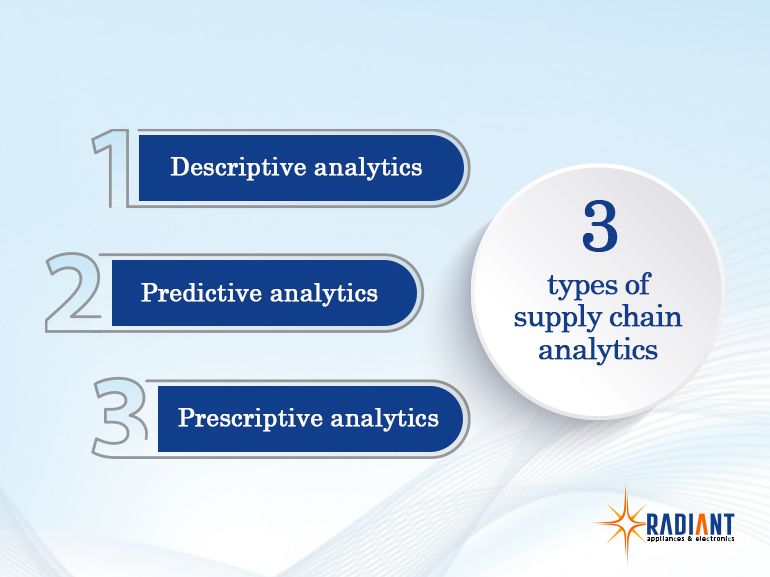Many companies use supply chain analytics to make data-driven decisions. Analysts use summarized data to gain insight or extract value from a large amount of information.
Initially, the analysis helped in finding relevant statistics and a few KPIs that predicted future demand. But since then, cloud-based platforms have helped store and share large amounts of data easily. Because the technology was able to process data faster and more effectively, many companies have adopted this method of data analysis for the supply chain management. Each organisation prefers a different method of analysis that helps its growth. This is because every analysis process has its unique feature and output.
Find out more about these analytics, their importance, along with features, and more right here.

1. Descriptive analytics
The descriptive analysis describes what is happening now based on historical data. By using this, you can keep track of current operations and their functions. It gives you detailed information about how your operations are running, what is the status of the inventory, and more. This helps you track changes on a month-to-month basis or during a specific timeline.
2. Predictive analytics
The analysis is all about finding a future outcome based on current and past events. Based on the data and information collected, the analysis gives the most likely outcome. Today, with recent technology, people prefer Artificial Intelligence (AI) for this analysis. The use of AI allows a higher success rate with fewer manual errors.
3. Prescriptive analytics
This analysis helps in finding out ‘how to make something happen.’ This form of analysis is also well known to use AI to get the best-case scenario. The prescriptive analysis uses two basic algorithms; they are heuristic and exact. Where the heuristic algorithm gives less accurate shortcut solutions, and the exact algorithm gives accurate results.
One of the best ways to predict future demands is to understand and learn from the past. That is exactly what supply chain analytics is about. It takes years’ worth of data and optimises the data for better outcomes. During the analysis, for example, we discovered that a supplier was taking longer to produce the raw material. As a result, the entire production faced a setback. Based on this study, we can replace the provider, commencing operations as usual. Therefore, supply chain analysis is essential to find the most optimal method for the supply chain management.
Throughout the course of the analysis, numerous obstacles can arise. Some of the common challenges are:
Luckily, several smart analytics tools have come to the fore. Stay updated and implement them for better results.
Any manufacturing operation relies on its supply chain. Since its inception, Radiant Appliances & Electronics. has established its credibility when it comes to supply chain management. You can visit our website to learn more about supply chain management and what Radiant offers.